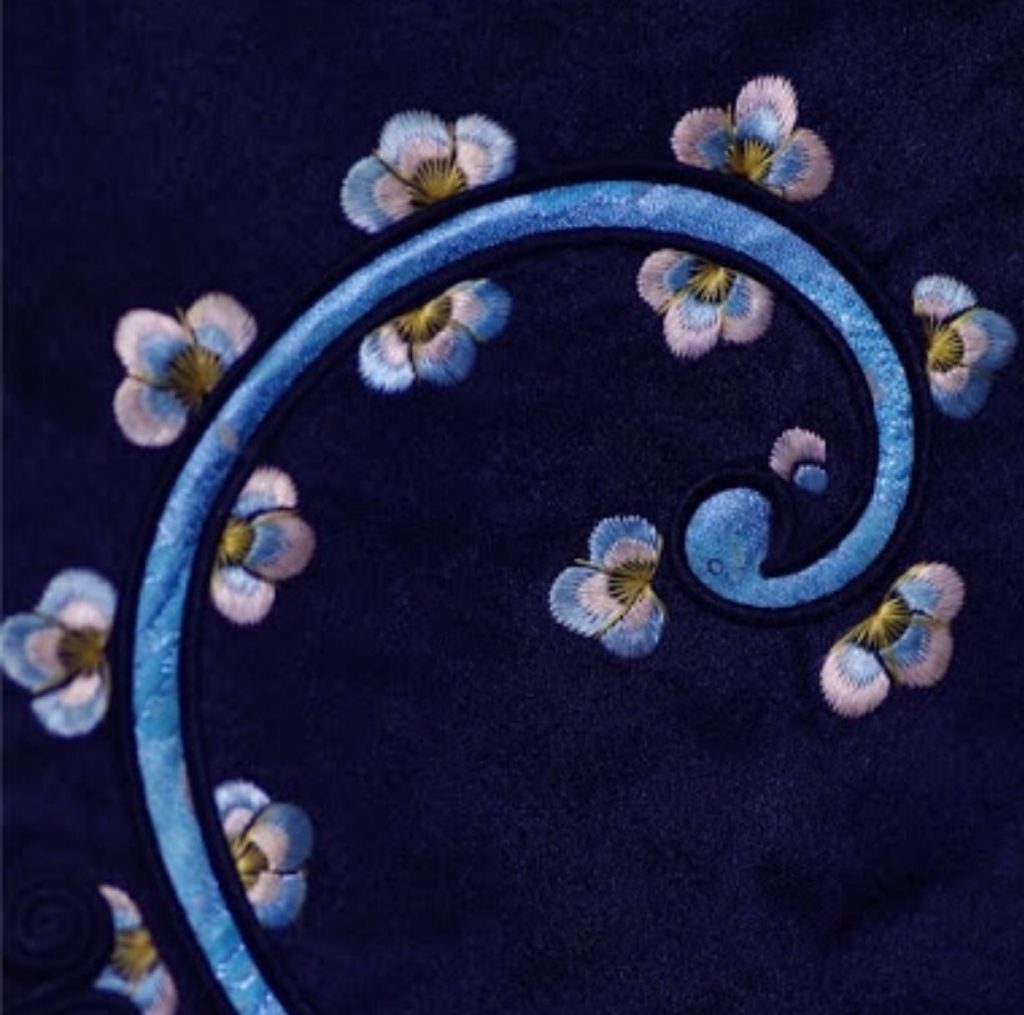Leung Ping-kwan 梁秉鈞 was a prominent Hong Kong poet and essayist, better known in his home city as Yah-see 也斯, Yesi in Mandarin. To most of his friends he was simply ‘PK’, an abbreviation for pak-gai 撲街 in Cantonese, literally ‘hit the street’, or ‘fuck off’.

In the mid-1990s, PK wrote a sequence of seven poems entitled Museum Pieces 博物館. They are: Cauldron, ‘Clay Figures’, ‘Bronze Mirror’, ‘Arhats’, ‘Embroidery’, ‘Fragments of a Fish-shaped Pot’ and ‘A Han Dynasty Rubbing’. All of these poems are meditations on Chinese history and politics, in which the poet pays an imaginary visit to a museum, viewing the artefacts as prisms with which to penetrate the patina of history, to tell the tales that lie behind the official authorized annals.
His is a radically iconoclastic view of Chinese history, of that ‘long scroll of humanity that never seems to tire of being stitched and unstitched’. Three of the series were published in translation in the Simon Fraser University journal West Coast Line a year or two later. The entire sequence will now appear in translation in the forthcoming Collected Poems of P.K. Leung, to be published by the Chinese University of Hong Kong Press in 2018.
— John Minford
1 September 2017
***
Commemorating Hong Kong in China Heritage
- Cauldron 鼎, China Heritage, 1 July 2017
- Yau Ma Tei’s Hong Kong Rhapsody, China Heritage, 4 July 2017
- Twenty Views of Fragrant Harbour by Lois Conner, China Heritage, 8 July 2017
- The Floating City 浮城, China Heritage, 12 July 2017
Embroidery 刺繡
Leung Ping-kwan 梁秉鈞 (也斯)
1995
Amongst all the silken hangings and robes, I wonder if I can recognize your fine needlework? A long soft thread, a needle, like a fish, weaving its way in and out, spinning the morning’s feelings, a child’s red dress, bat-like clouds twirling around signs of double happiness, damascene of light and shade, stirring memories of high expectations and dashed hopes – when was all of that? The allied troops took Peking, their soldiers roamed the city, stopping to gaze in delight at the exquisite embroideries from Soochow. I seem to hear you now murmuring tales of spring dew on the gourds, of chilly days calling for warmer clothes, subtlest of feelings delicately interwoven, but from a distance like some fairy celebration, women from the pleasure quarters with their stubby hands, unlike your slender fingers, little bird caught in a storm, as the embroidery factories of the revolution were all closed down, and women in droves poured through the big silk emporia, past the street-stalls, as old frayed outlines, discarded threads, having drifted from one place to another, were being carefully stitched and patched together again, scrolls of sorrow and joy, partings and reunions, were unfurled, and then the shops on Embroidery Street were closed down one by one, leaving you, frail floating strand of gossamer, a pressed flower, silent and homeless, and then the Pacific War broke out, a bowl of rice desolate in the window, garments for overseas shipment stacked up in piles, an afternoon’s torrent of words having no necessary connection with history, those men on the other bank, veiled in mist, are they enemy soldiers or lovers, with steaming bowls of soup in their hands, we too stood by the river, do you still remember, the fish throwing up clouds of spray, all these old images for you to play with, sitting by the window, working delicately at a scented girdle-pouch, decorating it with idle flowers in dark red thread, not necessarily unrelated to history, taking me for an idle flirt, wishing to flaunt my wealth, and me wondering if you might embroider a love scene from The Western Chamber for my bodice? A new era, a new pattern, who can ever hope to capture the absurdities and profundities of history, the infinite detail, the contradictions filling out the design, you stopped for a while to pick another pattern, finding this one too simple, that one too complicated, a thousand hands meanwhile scrambling to tear the outline apart, a deafening crescendo of gongs destroying the peace at the dining table, sparrows in a mad flutter, and later, for some reason, the looms all destroyed, fine needlework in gold and purple ripped to shreds, swallowed by fire, turned to ashes, do you remember those years? I remember lace borders, flowery threads burrowing their way deep into intricate layer upon layer of colour, building new landscapes, I remember the hubbub of the market-place, all the irrelevant details that are more vivid than history proper, and then McDonalds and the latest fashions that came in from the West, and you took out the old clothes again and pored once more over the fancy lace trimmings, your needle never resting, weaving its way in and out of the long scroll of humanity that never seems to tire of being stitched and unstitched, a pattern of a myriad threads, myriad variegated silken strands
— translated by
Martha Cheung 張佩瑤
and John Minford

刺繡
也斯
一幅一幅五彩的戲幛和衣袍
之間,不知我可能認出你的
繡工和針法?一條綿長的線
一口針,像一尾魚,穿過來
插過去,織一個早晨的心緒
童子紅衣上有蝠雲雙喜花紋
彷佛有明暗之感,牽起種種
等待的起落,那是甚麼時候
八國聯軍入京之後,外國兵
閒蕩在京城,翻弄著美麗的
蘇繡,我以為我聽見你娓娓
說春天瓜果上的雨露,風寒
裡加衣,兜兜轉轉,隱約的
感情都織進去了,遠看不過
只是一幕麻姑獻壽,香粉院
婦人有粗大的指頭,不比你
纖細的柔荑,風暴中的小鳥
革命以後官辦的女子繡工科
停辦了,紛紛流入大綢緞莊
和沿街的店舖,翻新舊畫面
繽紛線頭流徙尺幅悲歡離合
繡花街的店舖後來紛紛關門
你暗啞的一縷游絲到處飄泊
花朵壓在一起,太平洋戰爭
爆發,一碗飯擱在窗旁冷了
運往外面的衣裝也壓了下來
在這一個下午老說不完的話
未必跟歷史直接呼應,煙霧
迷濛的對岸是敵兵還是情人
手中的一碗熱湯,人在河邊
你可還記得,魚兒拔刺一聲
激起浪花,都是老舊的意像
任你調弄,你坐在窗前細細
繡一個香袋,用深紅線套繡
腰帶上的閑花,未必與歷史
無關,你想我是閑散無聊的
白相人,隨身帶著京式九件
問兜肚上可會繡一齣西廂記
一個新時代是一幅新的花款
誰能編出歷史的荒誕與莊重
瑣細的剛柔,充滿了矛盾的
構圖,你停下來挑一種花紋
只嫌這太簡單,另一種又太
複雜,眾手爭奪撕裂了圖帛
銅鑼急急敲破飯桌上的安靜
麻雀亂飛,不知怎的紡織機
後來全毀了,金紫的女紅撕
成片片,在火焰中化為灰燼
那些年月你可記得?我記得
繡花邊,彩線多方鉆營密密
層層顏色,帶出一片新風景
連起市場裡許多鬧哄哄人聲
那些無關的枝節比史書生動
麥當勞和歐美的時裝進來了
你又翻出舊衣褲上的子牙邊
針總沒有停,連著長長的線
拆了又織的人間長卷,進去
出來,帶著細碎的千絲萬縷

